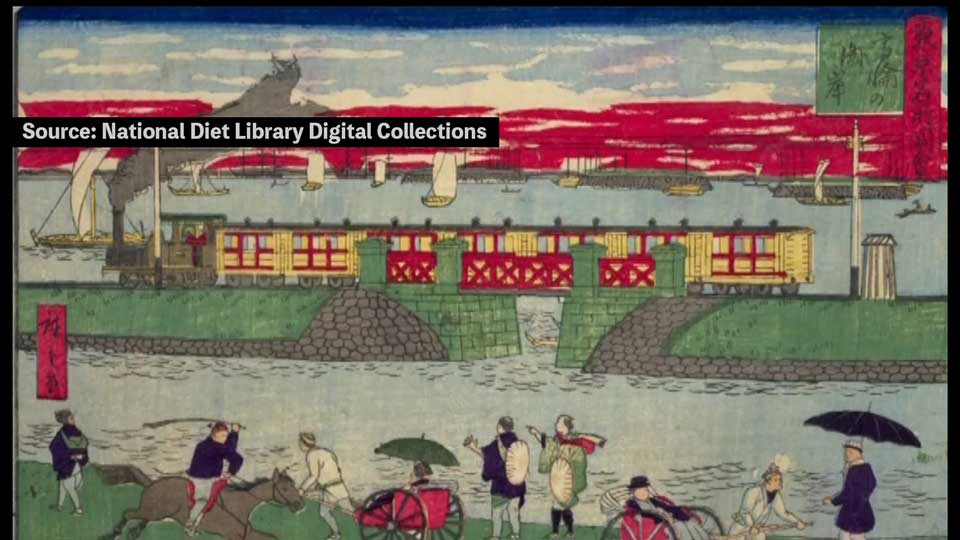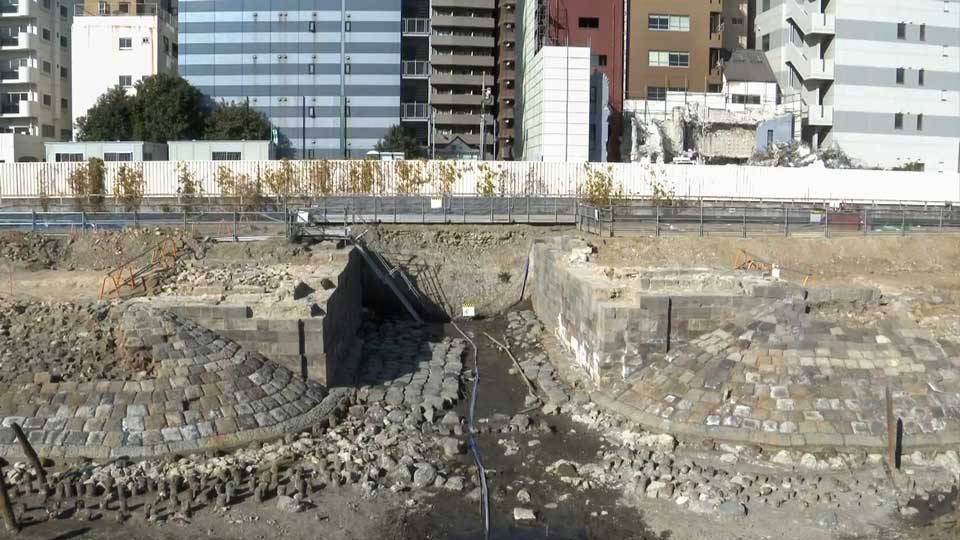The approximately 800-meter relic was found in 2019, not far from Takanawa Gateway station on the JR Yamanote Line. It was part of the nation's first railway, which opened in 1872 during the Meiji era, and ran for 29 kilometers between Shimbashi and Yokohama.
Back then, the embankment was about 2.7 kilometers long. It was built over shallow water and, thanks to the way the passing trains appeared to simply float on by, became a frequent subject for woodblock print artists.

Reclamation work means it is now surrounded by dry land and countless buildings. The area has changed drastically over the years, and will do again, with several high-rise residential, business and shopping complexes set to pop up soon. The embankment, on the other hand, looks just as it did 150 years ago.
The significance of the find is being celebrated by the Japanese Archaeological Association, which describes the embankment as the first major project in the nation's period of modernization. The most notable feature is its intricate rockwork – described as a combination of traditional Japanese techniques with advanced engineering from Britain.
"I believe it was built in a Western style by artisans who had learned the traditional methods used for Edo-era castles. The remains clearly show what Japan's modernization looked like," says Waseda University Professor Tanigawa Akio, who chairs a panel established by railway operator JR East to study the embankment.

Prime Minister Suga Yoshihide visited the site on May 29. "I was moved to learn that engineers from the Meiji era had great skills," he said. Suga added that he hopes it will be designated as a national historic site.
In March, the Archaeological Association asked JR East and the Agency for Cultural Affairs to fully preserve the Takanawa embankment. However, JR East plans to preserve only the parts deemed to have the most historic value, including an 80-meter bridge. A section that includes what is believed to be the base of Japan's first railway signal will be moved to a location nearby.
The cost of the work could run as high as 40 billion yen, or about 360 million dollars. JR East plans to ask the central government and other agencies to help fund the project.

